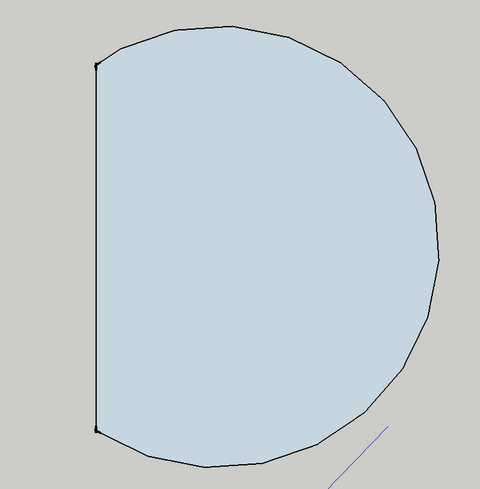Here's something that just hit my desk. A 40' D-Shaped revolve. Essentially it is a circle with a third of it chopped off. It needs to rotate all the way around. Multiple times. Both directions. Multiple stopping points. Before I tell the designer he has to be joking... I thought I'd see what some prevailing thoughts were. Pretend there is about 10k to throw at this, there probably is.
I've done smaller revolves that were controlled from a trap room. Basically just run the axle straight through the deck/hubs/sprockets/idler/motor....shazam. But this beast is going to weigh (and I haven't worked all these numbers perfectly yet) in the neighborhood of 6,000lbs.
So I imagine the axle drive is theoretically possible, but it seems to me the gear ratio is going to have to be phenomenal. If not to get the thing moving, then definitely to get it to stop. I'm thinking I might need an auxiliary means of braking.
Lastly, since it's d-shaped, the upside down castors on the deck is out. Does anyone have any genius suggestions to this end? One loco-thought I had was an air castor system. The thought being that it could be used as an e-stop as well. But then god forbid something goes wrong with the hoses or there is a leak....and it's under a revolve under thousands of pounds of scenery....yeesh....
thoughts?
I've done smaller revolves that were controlled from a trap room. Basically just run the axle straight through the deck/hubs/sprockets/idler/motor....shazam. But this beast is going to weigh (and I haven't worked all these numbers perfectly yet) in the neighborhood of 6,000lbs.
So I imagine the axle drive is theoretically possible, but it seems to me the gear ratio is going to have to be phenomenal. If not to get the thing moving, then definitely to get it to stop. I'm thinking I might need an auxiliary means of braking.
Lastly, since it's d-shaped, the upside down castors on the deck is out. Does anyone have any genius suggestions to this end? One loco-thought I had was an air castor system. The thought being that it could be used as an e-stop as well. But then god forbid something goes wrong with the hoses or there is a leak....and it's under a revolve under thousands of pounds of scenery....yeesh....
thoughts?



